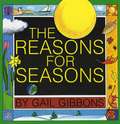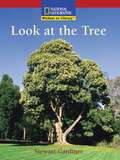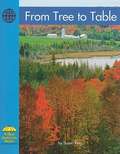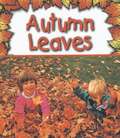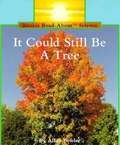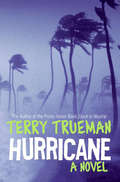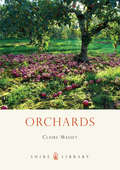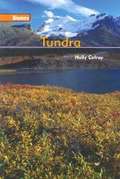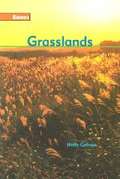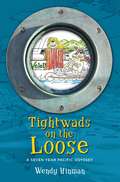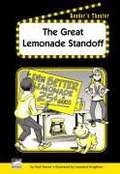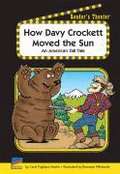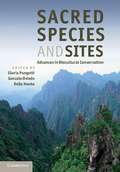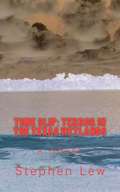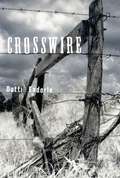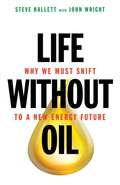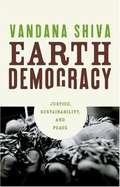- Table View
- List View
The Reasons for Seasons
by Gail GibbonsHere is an explanation of how the position of Earth in relation to the sun causes seasons, and the wonders that come with each one of them.
Cool Off
by Nellie DiazA group of children in a city neighborhood try all sorts of ways to cool off on a hot summer day.
Look at the Tree
by Stewart GardinerThis book points out different aspects of a tree that make it special.
From Tree to Table
by Susan RingThis book reviews the process of gathering, making, and selling maple syrup.
Autumn Leaves
by Gail Saunders-SmithThis book presents the different types and colors of leaves found in the Northern Hemisphere in autumn.
It Could Still Be a Tree
by Allan FowlerThe book goes through many different species of trees and identifies their discerning qualities.
Wood
by Rebel WilliamsA daughter explains the processes her and her father went through to build their dog house.
Hurricane
by Terry Truemanoutside, the wind is howling. it is a monster shrieking to get inside. outside, the rain is a solid wall of water. everything is dark. everything is destroyed. everything is gone.... Everything except for the desperate courage of those who survive that terrifying night. After hours of cowering in the dark with no lights, no warmth, and the terrible noises of the rain and wind pounding on the walls, JosÉ walks out his front door and steps into a nightmare. But his nightmare has only begun as he and the few who are left in his small village start to pull their lives back together. Based on Hurricane Mitch's devastation of Honduras in 1998, Terry Trueman's powerful story is about a young boy's fear and courage in the face of a force of nature too huge to even imagine.
Orchards
by Claire MassetWhether in blossom and laden with fruit, orchards are places of great beauty. Throughout history, they have played an important role in country, and also city, life, providing not just food and drink, but also a haven for wildlife and a setting for age-old customs and social gatherings. Some of Britain's surviving orchards are almost 600 years old. But when did orchards first appear? Why are there over 3,000 varieties of apple, so varied in colour, shape, texture and taste? What is wassailing and who did it? Why has England lost almost two-thirds of its orchards since 1950 - and what is being done about it today? This beautifully illustrated book reveals the engaging story and rich diversity of Britain's orchards and answers many intriguing questions along the way.
Forests and Forestry (6th Edition)
by Gary L. Rolfe John M. Edgington I. Irving Holland Gayle C. FortenberryThe sixth edition of Forests and Forestry continues to stress the importance of balancing the needs of traditional forestry with the needs of a changing world. It consistently emphasizes the necessity of increasing public awareness and public involvement in the decision-making process while maintaining a strong forest products economy.
The Sahara: World's Largest Desert
by Jil FineThis book goes in depth into the Sahara Desert. It explains it's location, climate, land, and the people that live there.
Tundra (Reading Power)
by Holly CefreyThis book goes in depth into the distinguishing features of the tundra biome.
Grasslands (Biomes)
by Holly CefreyThis book leads you into the Grasslands biome. It goes into detail of its many distinguishing features.
Earthquakes
by Franklyn M. BranleyRead and find out about one of nature's most mysterious forces--the earthquake. Some earthquakes are so small that you don't even feel them, while others can make even big buildings shake! Learn why earthquakes happen, where they are most likely to occur, and what to do if one happens near you.
Tightwads on the Loose: A Seven Year Pacific Odyssey
by Wendy HinmanEveryone dreams of tropical escape. But what happens when you escape for too long? Imagine spending 24 hours a day with your spouse in 31 not-so-square feet...for years; crossing the Pacific Ocean on two gallons of fuel; and tossing spaghetti marinara around your living room, then cleaning it up while bouncing like ice in a martini shaker. "Tightwads on the Loose" tells the story of Wendy and Garth, lured to sea by the promise of adventure. They buy a 31-foot boat that fit their budget better than it fits Garth's large frame and set sail for an open-ended voyage, never imagining they'd be gone seven years, or cover 34,000 miles at the pace of a fast walk. They live without what many would consider necessities and learn that teamwork and a sense of humor matter most as they face endless "character-building opportunities." They make a long-anticipated visit to the island where Garth had been shipwrecked as a teenager, only to find it had become a penal colony. An electronic catastrophe in the Solomon Islands leaves them without navigation equipment, which forces them to trade their free-wheeling lifestyle for one that seems straight out of a '60s sitcom: jobs at a U. S. Army base in the Marshall Islands. In Asia, they dodge typhoons and ships that threaten to turn their home into kindling. Finally they endure a grueling 49-day nonstop ocean crossing. But none of this prepares them for their arrival "home" to a post-9/11 America which leaves them wondering what had changed more, them or the world.
The Great Lemonade Standoff
by Jeffrey Fuerst Laurence Knighton Ruth RomerPerform this script about two enterprising kids who open lemonade stands across the street from each other.
How Davy Crockett Moved the Sun: An American Tall Tale
by Carol Pugliano-Martin Jeffrey Fuerst Dewayne WhitesidePerform this American tall tale about how Davy Crockett moved the sun.
Sacred Species and Sites
by Della Hooke Gonzalo Oviedo Gloria PungettiIt is being increasingly recognised that cultural and biological diversity are deeply linked and that conservation programmes should take into account the ethical, cultural and spiritual values of nature. With contributions from a range of scholars, practitioners and spiritual leaders from around the world, this book provides new insights into biocultural diversity conservation. It explores sacred landscapes, sites, plants and animals from around the world to demonstrate the links between nature conservation and spiritual beliefs and traditions. Key conceptual topics are connected to case studies, as well as modern and ancient spiritual insights, guiding the reader through the various issues from fundamental theory and beliefs to practical applications. It looks forward to the biocultural agenda, providing guidelines for future research and practice and offering suggestions for improved integration of these values into policy, planning and management.
Time Slip: Terror in the Texas Wetlands
by Stephen D. LewFour Texas teens stumble upon a living nightmare when an electrical storm creates a time portal. The group unintentionally journeys 158 years back in time where they are held captive by a band of Karankawa Indians. On the desolate Texas wetlands, the mismatched teens must confront their inner-demons, survive the hostile environment, and find a way to work together to get back home.
Crosswire
by Dotti EnderleWhen an 1883 drought drives free-range cattlemen to shred Texas ranchers' barbed wire fences and steal water, thirteen-year-old Jesse works hard to help while dealing with his father and brothers falling-out and his own fear of guns.
Life Without Oil: Why We Must Shift to a New Energy Future
by John Wright Steve HallettHallett (botany and plant pathology, Purdue U. ), who is joined by John Wright, an energy and environmental journalist, contends that oil and natural gas supplies will wane by the end of the century and that society has failed to see this problem and act on it. He describes the history of the world in terms of energy use, how the petroleum interval of the last century fits into larger civilization, and how the rise of civilizations has been a story of human access to increasingly powerful sources of energy and that problems with access to energy have led to societal collapse. He examines problems that are likely to occur in different countries over the next half century, effects on the global economy, and what can be done about them it by considering nuclear power, reconnecting communities, focusing on sustainable agriculture, and recognizing that the laws of ecology override the economy. Annotation ©2011 Book News, Inc., Portland, OR (booknews.com)
Earth Democracy: Justice, Sustainability, and Peace
by Vandana ShivaBoldly confronting the neoconservative Project for the New American Century, world-renowned physicist and activist Vandana Shiva responds withEarth Democracy, or, as she prophetically names it, "The People's Project for a New Planetary Millennium. " A leading voice in the struggle for global justice and sustainability, here Shiva describes what earth democracy could look like, outlining the bedrock principles for building living economies, living cultures and living democracies. Starting from the initial enclosure of the commons--the privatization of six million acres of public land in eighteenth-century Britain--Shiva goes on to reveal how the commons continue to shrink as more and more natural resources are patented and fenced. Accompanying this displacement from formerly accessible territory, she argues, is a growing attitude of disposability that erodes our natural resources, ecological sustainability and cultural diversity. Worse, human beings are by no means safe from this assignment of disposability. Through the forces of neoliberal globalization, economic and social exclusion work in deadly synergy to perpetrate violence on vulnerable groups, extinguishing the lives of millions. Yet these brutal extinctions are not the only trend shaping human history. Forthright and energetic, Vandana Shiva updates readers on the movements, issues and struggles she helped bring to international attention--the genetic engineering of food, the theft of culture and the privatization of natural resources--and deftly analyzes the successes and new challenges the global resistance now faces. From struggles on the streets of Seattle and Cancun and in homes and farms across the world has grown a set of principles based on inclusion, nonviolence, reclaiming the commons and freely sharing the earth's resources. These ideals, which Shiva calls "earth democracy," will serve as unifying points in our current movements, an urgent call to peace and the basis for a just and sustainable future.
The Mangrove Tree: Planting Trees to Feed Families
by Susan L. Roth Cindy TrumboreFor a long time, the people of Hargigo, a village in the tiny African country of Eritrea, were living without enough food for themselves and their animals. Then along came a scientist, Dr. Gordon Sato, who helped to change their lives for the better. And it all started by planting some special mangrove trees. This fascinating story of environmental innovation is a celebration of creativity, hard work and the ability of one man to make a positive difference in the lives of many.
In the Shadow of Man
by Jane van Lawick-GoodallJane Goodall's first popular account of her studies of the chimpanzees of the Gombe Stream area near Lake Tangyinika in Africa.
